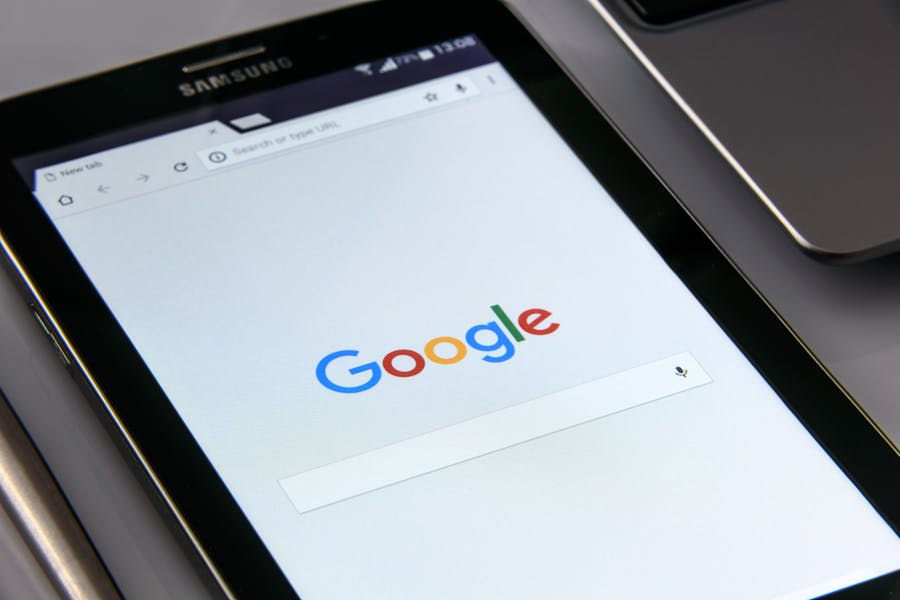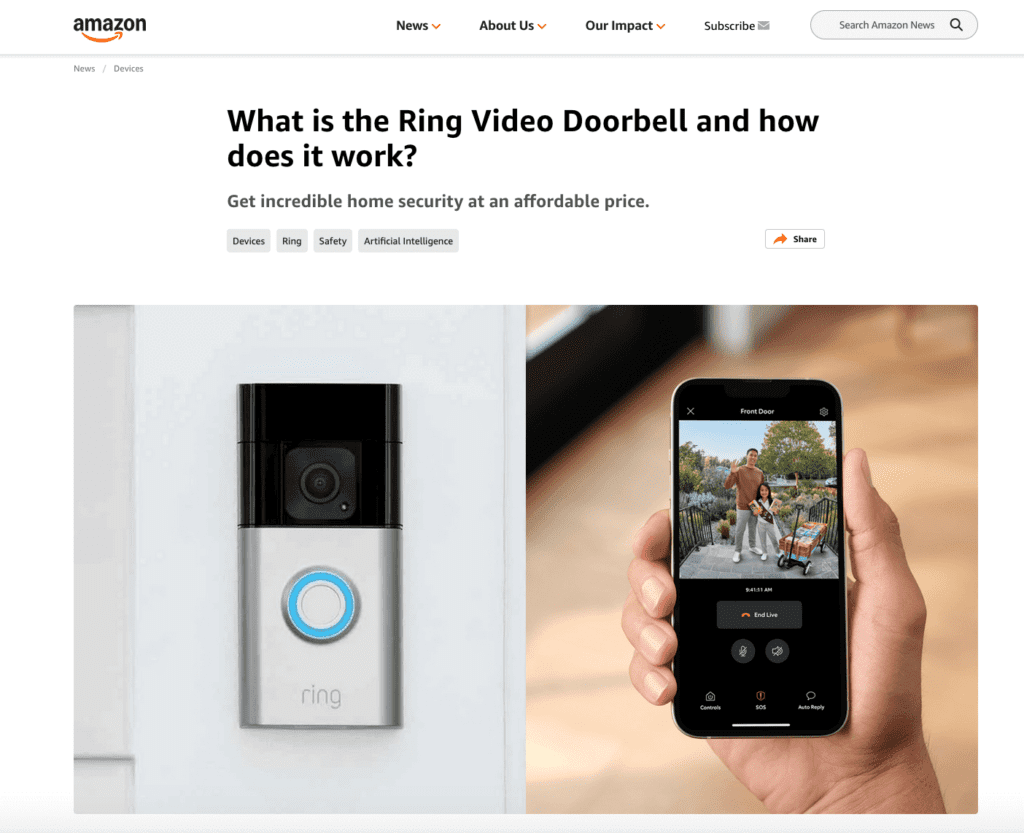4 Types of Search Intent: A Guide for Content Marketers
Content is the backbone of marketing. Every marketer knows this. But here’s the catch – creating content isn’t enough. You need content that clicks with the right audience. Content that sticks with them and keeps your brand on top of their minds. One of the most effective ways to achieve this is by understanding search intent.

Search intent is that which pushes customers to grab their phone and search for something. It is about those burning questions in your target audience’s mind. So yes, it can be one of the most valuable elements to consider when crafting your content. After all, people don’t want to feel like they’re being talked at. They want to feel understood and acknowledged. Content optimized for search intent achieves exactly that, making your audience feel seen and valued.
So today we’re talking about the most important types of search intent every marketer needs to understand so that you can create content and designs that stick. Ready? Let’s begin.
What Is Search Intent and Why Should You Care?
Search intent is as simple as it sounds, the intent behind a user’s decision to use the internet to find out an answer or information.
While there are several reasons why people use search engines, the most common ones can be categorized into four groups in the marketing context:
- Informational intent
- Navigational intent
- Commercial intent
- Transactional intent
We’ll delve a little deeper into each of these in the next section.
But before that, the main question – why is user intent a valuable consideration in content marketing?
- Most online experiences (about 68%) begin with a search engine. This means that Search is one of the most crucial spots where customers might stumble across your brand.
- Reportedly, nearly 75% of users do not scroll beyond the first page of search results. Knowing your user’s intent ensures that your content gets there.
- Organic traffic is known to help build trust and establish your brand’s authority. Optimizing your content to align with what your target audience is searching for helps increase organic traffic.
- When you know about search intent, your content creates value and connects with customers rather than just sounding promotional. This type of content can be the best advocate for your brand. It can build trust and foster loyalty as well. This is the type of content that will keep your audience coming back for more.
In short, creating content based on what people are searching for ensures that your website’s SEO performance is better, and can enhance overall user experience as well.
With the nitty gritty addressed, let’s now move on to understand each type of search intent and some content and design tips for each.
4 Types of Search Intent: The Secret Ingredients in a Winning Content Marketing Strategy
1. Informational Intent
Informational intent is when a customer is looking to solve a problem or find an answer when they are unsure about something. In short, there is some specific information they are looking for. Information intent mostly consists of “what” and “how” questions.
For example, consider the keyword “smartphone”. Search queries from customers with an information intent tend to be something like “What smartphone has the best camera” or “How much does a smartphone cost”.
One of the most important things to remember here is that people looking for information are not always looking to purchase something. Also, they might not have any particular location or website in mind when they search. In other words, these are the consumers often at the earliest stages of their buyer’s journey.
What does this mean for brands? This search intent type provides you with valuable opportunities to hook your audience at the get-go. To build trust and to establish yourself as a credible source of information and answers.
Content tips for information intent
Content for informational intent needs to focus on educating the audience. It should be about presenting them with useful information, and thought-provoking data and should help them solve a problem.
So what types of content work for this type of search intent?
- Informative blog posts
- Educational social media carousels
- How-to videos and guides
- Informative infographics
- Webinars product-specific
These could be in the form of an overview post or comprehensive coverage or even something product-specific. For example, the below post from Amazon is an introductory informational post that educates consumers about what a Ring Doorbell is and how it works. So anyone who was recently piqued by the concept of video doorbells or even someone who is just trying to understand if this is the kind of product they might eventually purchase will find this article to be handy.
When creating these types of content for informational intent, here are a few things to remember:
- Prioritize clarity. Remember that these are often consumers at the early stage of researching a product or finding information. So you do not want to overwhelm them with tough industrial jargon.
- When creating detailed blog posts, include plenty of relevant visuals or integrate other formats like videos and infographics into them. This helps break down the information into easily digestible sections.
- Include supportive facts and statistics to validate the answers or details you provide.
Design tips for informational intent
Visuals are crucial in simplifying the information you convey. These could be in the form of simple static images, engaging carousel slides, immersive long-form videos, or even short videos that give bite-sized answers. So, what are some design tips to know when designing content for informational intent?
- Readability is the number one priority. Therefore choose fonts and font pairings such that your text is easy to read (even on small smartphone screens).
- Ensure that there is ample white space to ensure that all eyes are on the core details in your design.
- When there is a lot of text, use minimal imagery or switch to simple icons and illustrations that are not distracting.
For instance, here’s an informative carousel from Instagram. It gives a brief overview of ads on the platform. From using big bold text to maintaining visual consistency and utilizing negative space to create a clutter-free design, this carousel exemplifies the best design strategies when creating content for informational intent.
2. Navigational Intent
Navigational intent is about proceeding in a set direction. In other words, customers are curious about a particular brand or places to purchase a particular product. So consumers with navigational intent are not exploring options or open-ended discussions. They are often looking for specific destinations.
Going back to our “smartphone” keyword example, the queries in this case will be more directional. For instance, “Apple iPhone support email” or “Where is the nearest Apple store”.
In this case, customers have either made up their minds on what brand or website to go to but need directions to get there. Sometimes this type of search intent is applicable to users who already own the product but are looking for after-sale support.
Content tips for navigational intent
Content for navigational intent is all about reinforcing your brand’s online presence and making it easy for your target audience to find you. This is where you use brand-related keywords effectively. When your audience is searching for your brand or store by name, your website should be the only one they click.
So, what types of content work well for navigational intent?
- Product pages
- Curated landing pages
- “About Us” pages
For example, on the Apple website, the below page is all about “Mac”. Therefore, it caters to a specific niche of audience – people who are planning to buy a Mac or those who own a Mac and are looking for support or additional details.
When creating content for navigational intent, here are some things to keep in mind:
- Gather a list of branded keywords and optimize the content on the page for these keywords.
- Optimize the pages for speed. These are often users who are looking for quick and accessible details, unlike users with an informational intent who are willing to spend time to delve deeper and refer to multiple sources. So you should be sure that a slow-loading page does not chase them away.
Design tips for navigational intent
Design has a big role to play when it comes to simplifying navigation. You need visuals that direct users to the right location rather than distract them or overwhelm them. Here are some design tips to achieve this:
- Ensure that the specific landing pages created are cohesive with your brand’s website homepage and social media aesthetics.
- Use your brand colors and fonts to strengthen brand recognition.
- Ensure a clear visual hierarchy so that users can easily find the information they are looking for.
- Add clear CTA buttons that are easy to access.
- Use relevant visuals to keep your “About Us” page engaging and to communicate your message clearly. Here’s an example of keeping it crisp and engaging.

3. Commercial Intent
The next type of search intent is commercial intent which is one of the most crucial for brands. Because commercial intent is when a consumer is actively searching for all the useful information they can gather with the intent to make a purchase.
This is the stage where they look for the “best” in the intended categories or comparisons to understand which product works for them.
Back to our “smartphone” keyword example. In the case of commercial intent, search queries will be something like “Best smartphones under $500” or “Top-rated smartphones for photography”.
One thing to note here is that these are consumers closer to the purchase stage in the buyer’s journey than those with informational intent, however, they might still not have made up their mind. In other words, they might still be open to “better” options.
Content tips for commercial intent
Considering that users with commercial intent are often not very particular about one brand or product, the objective here is to demonstrate why your product or brand is better than those in the industry. It is about creating content that directly influences their purchase decisions.
Taking this into account, what are the content types that work well for this type of search intent?
- Listicles presenting “best of” various categories.
- Detailed review articles.
- Carousels highlighting product features.
- Infographics and carousels comparing products to highlight the better option.
- Buyer’s guides in the form of blogs or social media posts.
- Unboxing videos.
- Influencer videos.
Now let’s talk about some quick tips to create content that appeals to consumers with commercial intent.
- Highlight the value created – the benefits and unique selling points of your product or brand.
- Add clear CTAs to direct consumers to the next step – whether it is to place an order or to register for your services.
- Include reviews from actual customers to add to the authenticity. And when creating influencer collaboration posts for this search intent, focus on preserving the influencer’s style to feel less promotional. Here’s a video that does that beautifully.
Design tips for commercial intent
When it comes to commercial intent, it is all about convincing consumers in the middle stage of the buyer’s funnel to the last stage. It is about helping them make an informed and confident purchase decision. So your designs in the form of targeted social media ads or even social media posts, and other formats can help achieve this.
Here are some design tips to remember:
- Include graphs, charts, tables, and other easily digestible visual formats to back up your claims with valid data. Data convinces potential consumers and helps eliminate second thoughts.
- Make your testimonial videos crisp and categorize customer reviews to highlight specific strengths of your brand.
- Leverage interactive formats like links on Story posts on Instagram, shoppable videos on YouTube, and more to simplify the purchase process for consumers.
4. Transactional Intent
The final type of search intent a content marketer needs to know is transactional intent. This one is all about making that final transaction happen. In other words, it is about the last stage of the buyer’s journey when the consumer has gathered all the essential information and made a purchase decision. They are at a stage where their search queries are all about “buy” or “get” the right deals and destinations to seal the deal.
In the case of our “smartphone” keyword, queries from a consumer with a transactional intent tend to be like “Buy iPhone 16 online” or “Best deals on Google Pixel 8 Pro”.
In short, consumers with this type of search intent know well about the product and brand they have finalized.
Content tips for transactional intent
Optimizing your content for transactional intent can be fruitful because this is the stage where you convert interest into revenue for your brand. Therefore, one thing to remember here is that you are creating content for consumers who have made up their minds and have gained a certain positive perception of your brand. Therefore, content for this type of search intent should focus on preserving this image.
What types of content are particularly relevant to cater to transactional intent?
- Product pages.
- Landing pages highlight promotions/discounts.
- Video tutorials demonstrating how to place an order or subscribe to your services.
- Social media posts with relevant product links.
- Landing pages where users can sign up for free trials.
- Ads leading to a purchase page.
With all these types of content to use, here are some tips to optimize them for transactional intent:
- Focus on building urgency. On ads and social media posts, highlight limited-time offers. Or even talk about limited stock.
- Keep the check-out process as short and smooth as possible.
- Highlight the benefits of placing an order immediately. Do they get free shipping? Or perhaps an exclusive coupon code to redeem? Here’s an example:
Design tips for transactional intent
Now let’s talk about creating designs that bring instant conversions for transactional intent.
- Include prominent easily accessible CTAs.
- If there are promo codes or special first purchase discounts and other benefits that your customer must know, highlight them in big bold text.
- Include trust badges underscoring important details like “secure checkout” and convenient payment options.
- Include a progress bar and other creative visuals to help customers understand how simple and quick the checkout process is.
- Display clear images and product titles or descriptions on the checkout page to allow customers be sure that they are placing the right order.

Master Search Intent & Optimize Your Content Strategy
To conclude, understanding search intent is key to nurturing meaningful connections with your customers. It is about creating value for your customers irrespective of the stage of the buyer’s journey they are in.
Each type presents marketers with unique opportunities and you need different strategies to tackle each. However, one thing remains the same – irrespective of the search intent type, you need quality content and designs to engage your audience.
That’s where an unlimited design service like KIMP comes in.
Start with your free 7-day trial today to see how to effortlessly optimize your visual content for different intent types.


